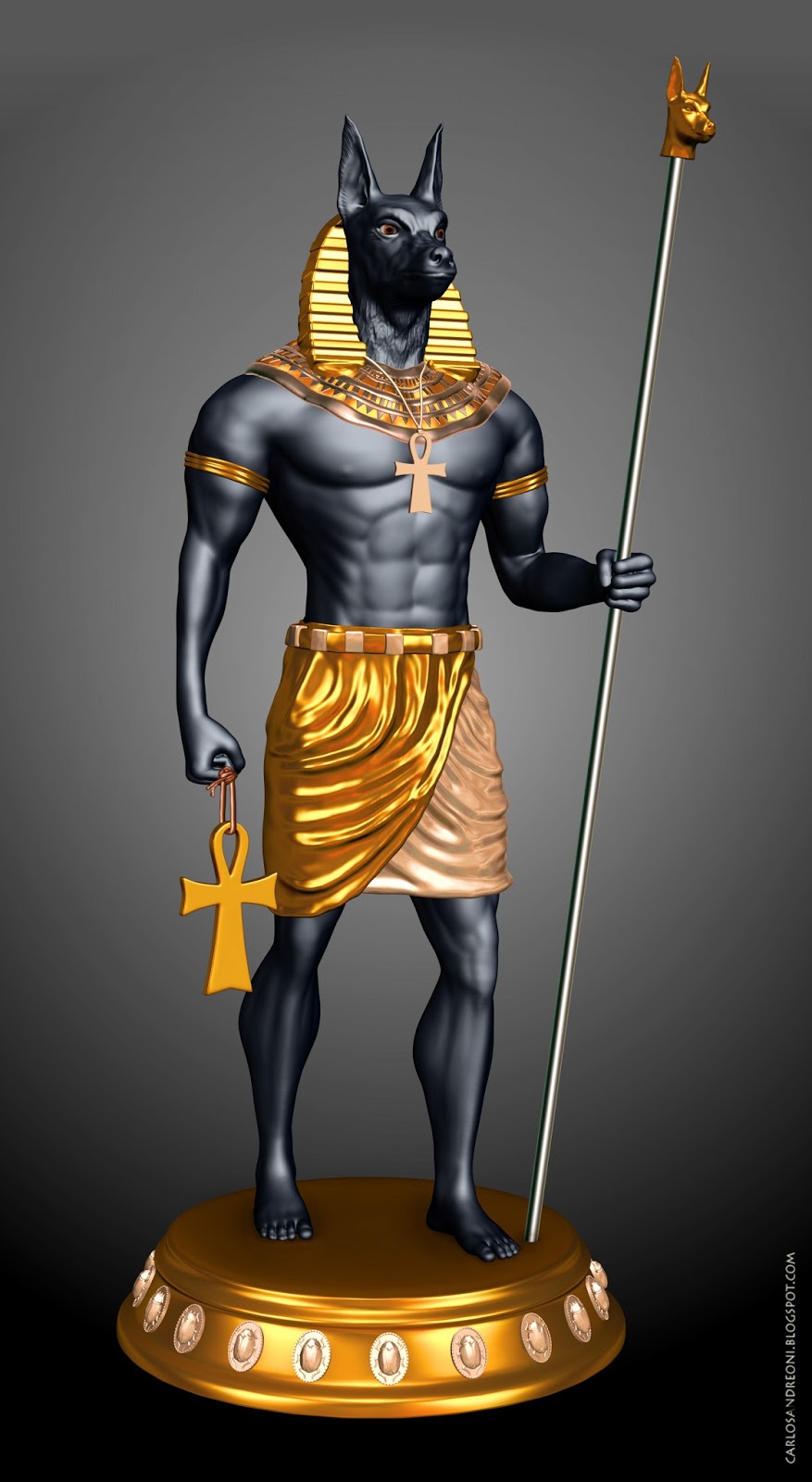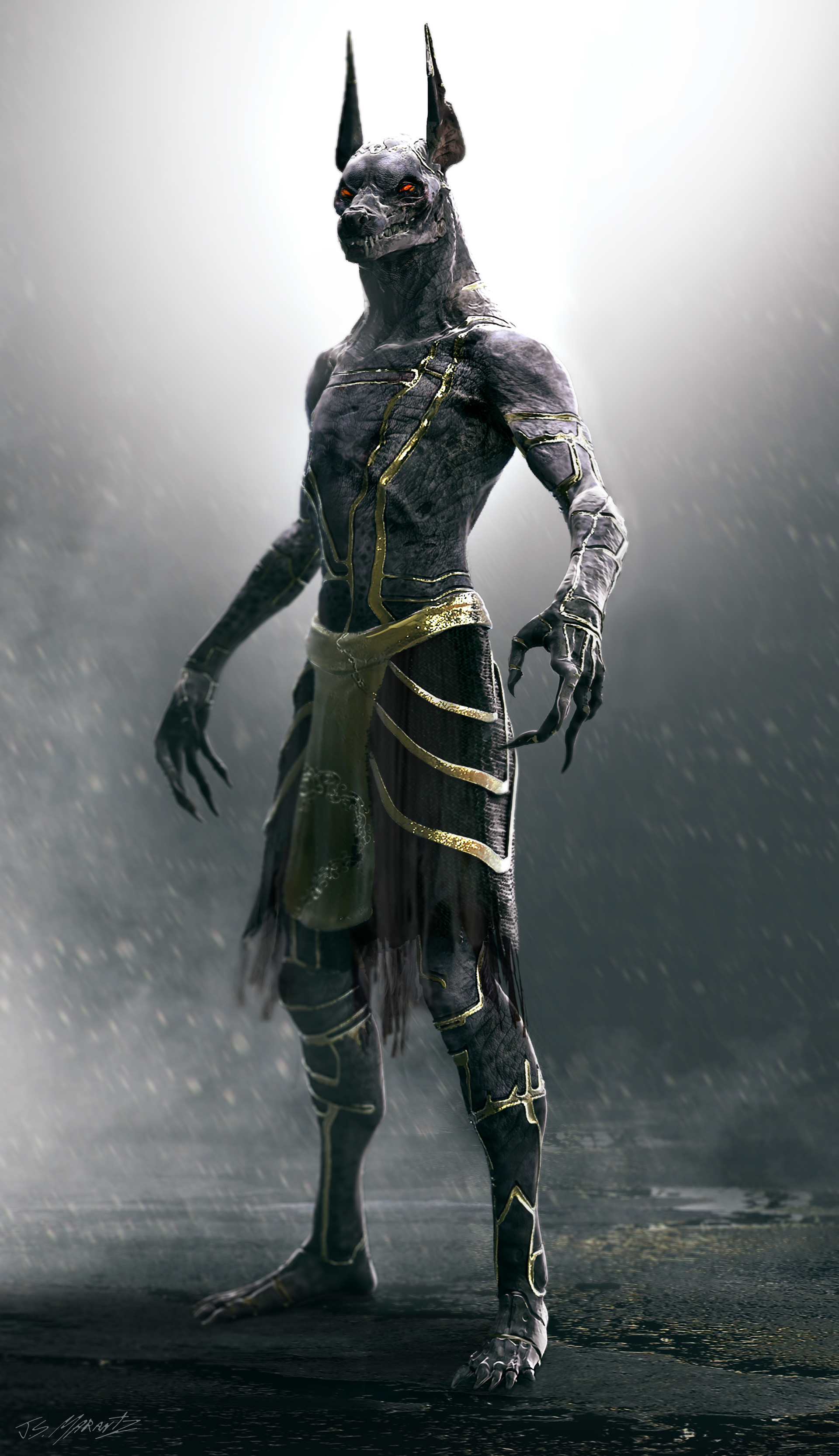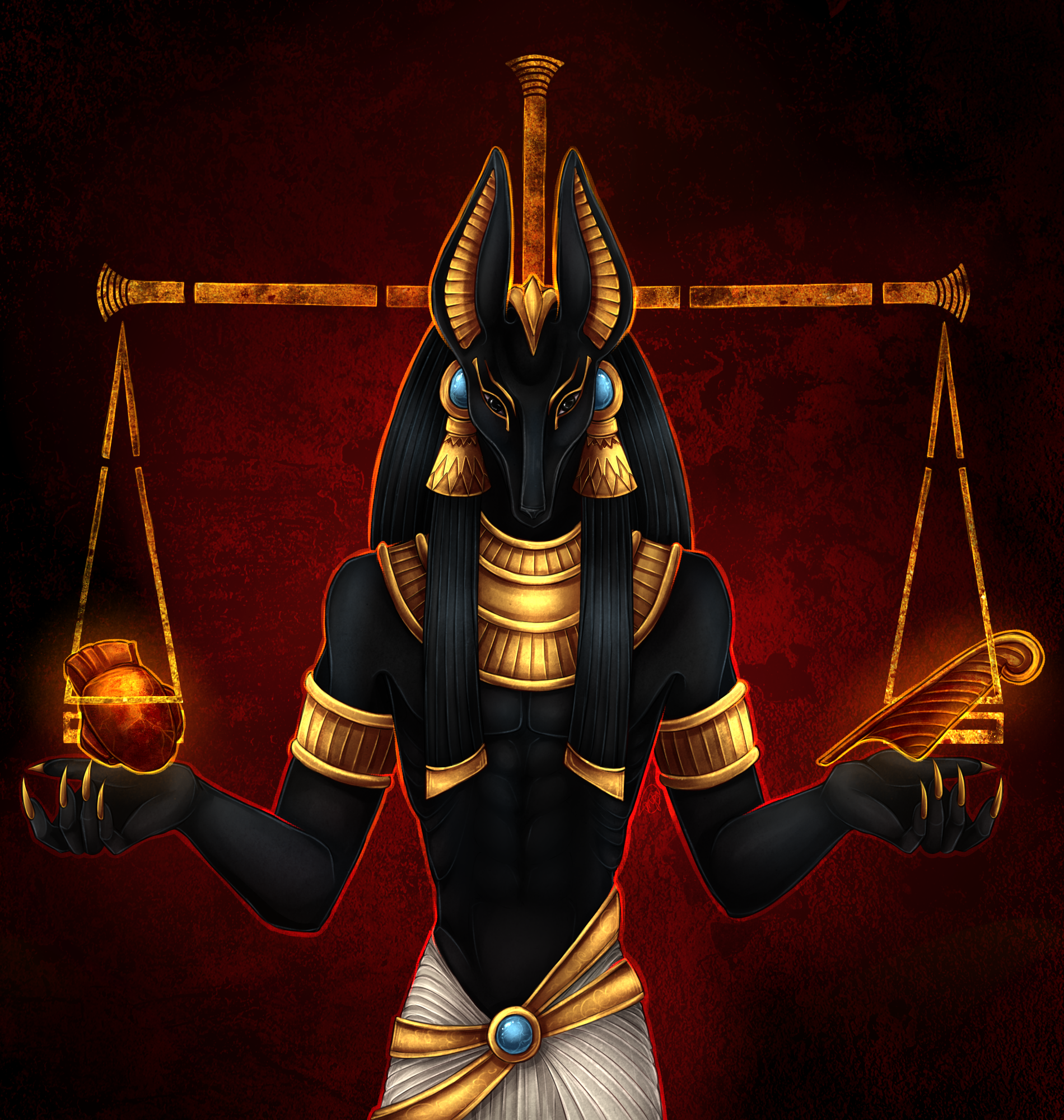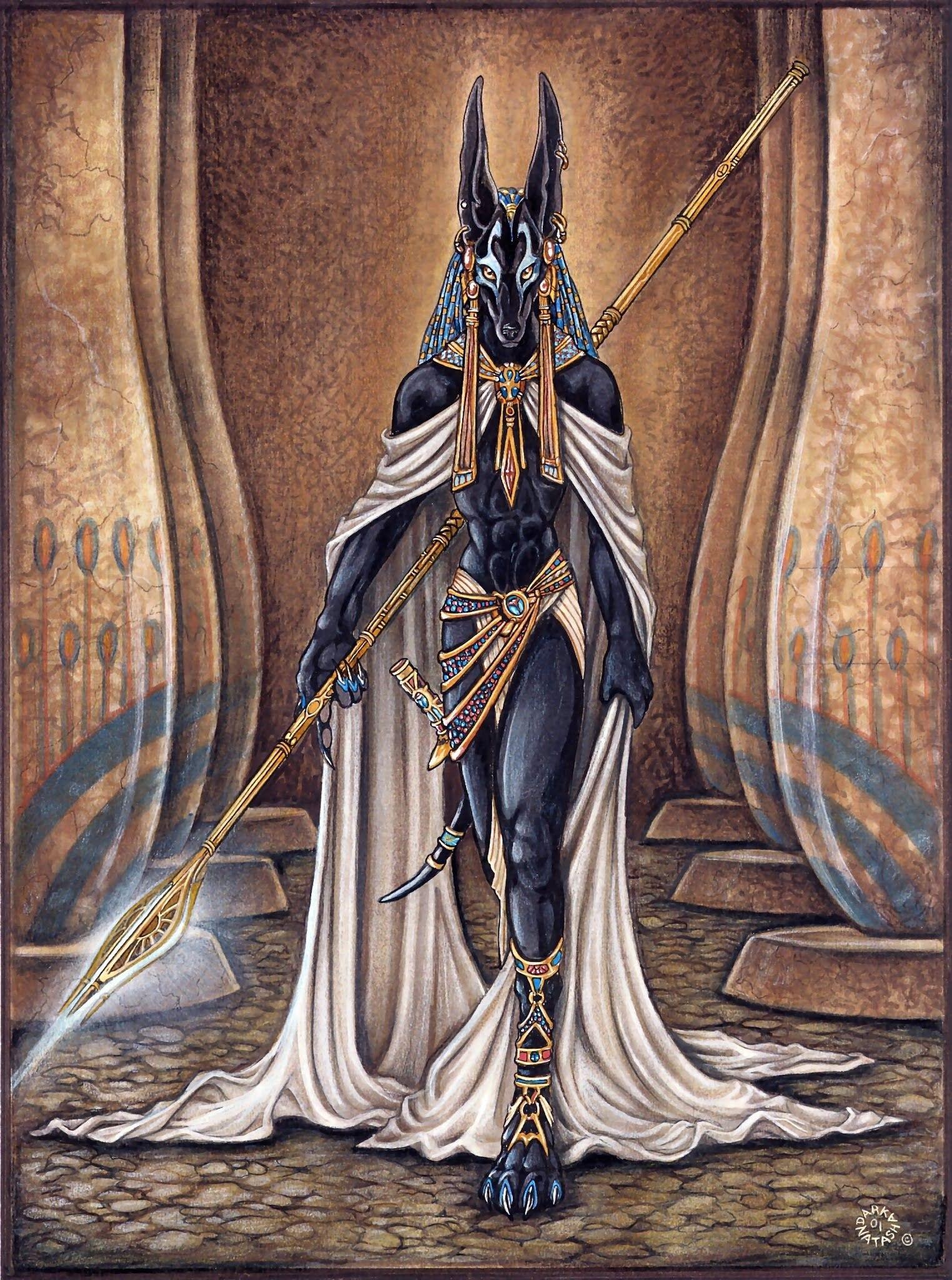
Anubis Egyptian God Wallpaper (61+ images)
With the head of a jackal and the body of a human, Anubis was the deity of death and mummification in ancient Egypt who accompanied kings in the afterlife. The symbol of Anubis — a black canine or a muscular man with the head of a black jackal — the ancient Egyptian god of the dead was said to oversee every aspect of the process of dying.

"Anubis" by Jerad Marantz, 2016. 神話上の生き物の芸術, エジプト, アヌビス
Anubis is an Ancient Egyptian God who is most closely associated with death, the afterlife and the mummification process.In ancient Egyptian religion, he is mostly depicted as a canine or a man with a canine head.Anubis played several important roles in Ancient Egyptian mythology including protecting graves; guiding individuals to the afterlife; and in the "Weighing of the Heart", an.

ArtStation Gods of Egypt Anubis Designs , Jerad Marantz Egypt concept art, Gods of egypt
In Egyptian mythology, Anubis was the original god of the dead. But as Anubis was worshipped by more followers, Osiris took over his role while Anubis had a more direct role guiding the souls of the deceased. Purpose Known as the jackal-god of mummification, Anubis was responsible for making sure the journey to the underworld went smoothly for man.

Egyptische Goden Anubis God Anubis God Pictures Anthonie van Sonsbeek
Anubis was the jackal-headed Egyptian god of death and embalming, and is said to be the son of Osiris by Nepthys, although in some legends his father is Set. It is the job of Anubis to weigh the souls of the dead, and determine whether they were worthy of admittance to the underworld.

Anubis Carlos Andreoni
The Egyptian god Anubis (a modern rendition inspired by New Kingdom tomb paintings) The god Anubis was usually depicted as a jackal and sometimes as a man, but he was always in black, which was a color connected with desolation and rebirth. Anubis had a female counterpart named Anput, and a daughter, who was the serpent goddess Kebechet.

ArtStation Anubis, Yefim Kligerman Anubis, Egyptian gods, Egyptian mythology
Anubis ( / əˈnjuːbɪs /; [2] Ancient Greek: Ἄνουβις ), also known as Inpu, Inpw, Jnpw, or Anpu in Ancient Egyptian ( Coptic: ⲁⲛⲟⲩⲡ, romanized: Anoup ), is the god of funerary rites, protector of graves, and guide to the underworld, in ancient Egyptian religion, usually depicted as a canine or a man with a canine head. [3]

Anubis. in De Oude Egyptische God Van De Nabestaanden , Die De Begraafplaatsen Tombs En De
Anubis was the Egyptian deity of cemeteries and embalming as well as the protector of graves. As with any other culture or religion around the world, the Egyptians believed in paying respect to their dead. Therefore, they conducted elaborate ceremonies and mummification processes to help the deceased pass smoothly into the Afterlife. Anubis was.

Anubis Egyptian God Wallpaper (61+ images)
Anubis ( Grieks: Ἄνουβις; Egyptisch: ı͗npw) is een god in de Egyptische mythologie. Hij werd afgebeeld als een jakhals of als een mens met het hoofd van een jakhals. Een jakhals is een aaseter, en waarschijnlijk zou de associatie met dit dier eerder geweest zijn om de doden te beschermen tegen vernietiging. Mythologie

3D model sphinx Anubis Egyptian God CGTrader
An objective and unbiased god, Anubis stands guard at the gates of the underworld and guides the souls of the dead as they proceed to be judged by a panel of gods. According to some ancient Egyptian myths - especially ones from the Old Kingdom period - Anubis is as old as time itself.

Sign in Dioses egipcios, Anubis dios egipcio, Egipto antiguo
One of the most famous figures of the Ancient Egyptian pantheon, Anubis was a powerful deity whose role shifted over time. Before Osiris and Isis rose to prominence, Anubis was worshipped as the god of the dead. When Osiris took on this role, however, Anubis became the god of mummification (as well as Osiris's bastard son).

Anubis by Varjopihlaja on DeviantArt
Table of Contents The evolution of Anubis from being recognized as the son of Ra, the sun god, to becoming the Egyptian god of funerary rites, protector of graves and guide to the underworld, provides a captivating insight into the ever-evolving religious and cultural beliefs of ancient Egypt. Anubis.

Anubis Egyptian God Wallpapers Top Free Anubis Egyptian God Backgrounds WallpaperAccess
Anubis is known as the god of death and is the oldest and most popular of ancient Egyptian deities. The ancient Egyptians revered Anubis highly because they believed he had tremendous power over both their physical and spiritual selves when they died. References to Anubis are found in texts dating back to the Old Kingdom.

Anubis by LarsRune on DeviantArt Egyptian gods, Ancient egypt art, Anubis
Anubis. Anubis, is the Greek name for the ancient god in Egyptian mythology whose hieroglyphic is more accurately spelt Anpu (also Anup, Anupu, Wip, Ienpw, Inepu, Yinepu, or Inpw). Prayers to Anubis have been found carved on the most ancient tombs in Egypt, indeed the Unas text (line 70) associates him with the Eye of Horus.

Anubis' throne, Kathrin Fuger on ArtStation at
Anubis, ancient Egyptian god of funerary practices and care of the dead, represented by a jackal or the figure of a man with the head of a jackal. In the Early Dynastic period and the Old Kingdom, he enjoyed a preeminent (though not exclusive) position as lord of the dead, but he was later overshadowed by Osiris.

Egyptian Art Print Ancient God Anubis Etsy Ancient egyptian art, Ancient egyptian gods
Anubis (also known as Inpu, Inpw, Anpu) is the Egyptian god of mummification, funerary rites, guardian of tombs, and guide to the afterlife as well as the patron god of lost souls and the helpless. He is one of the oldest gods of Egypt, most likely developed from the earlier jackal god Wepwawet with whom he is often confused.

Anubis, Egyptische God. Stock Fotografie Beeld 20921282
Anubis was an ancient Egyptian god of the dead, mummification, and embalming. He was a very important deity in the Egyptian pantheon, and was closely associated with death and the afterlife. 2. He was often depicted as a man with the head of a jackal or dog. He was often depicted as a man with the head of a jackal or dog.